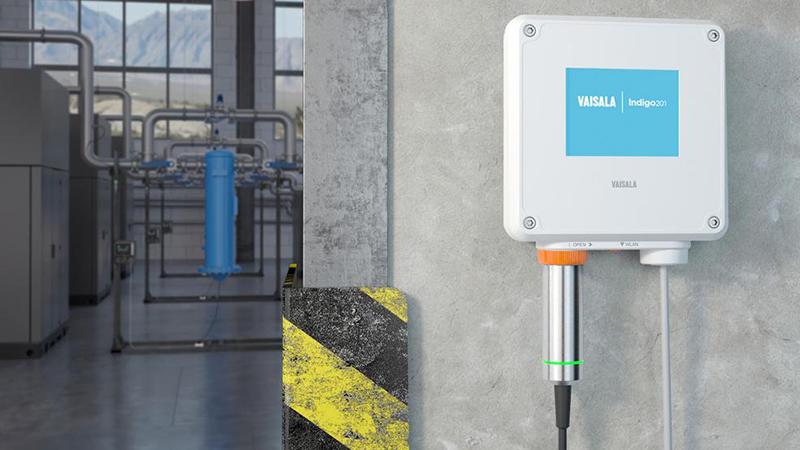The importance of humidity sensors


Humidity sensors are among the most commonly used instruments in environmental monitoring applications. Why? Because they are one of the most important measurements to get right when looking to create comfortable, safe, and energy efficient environments. For example, humidity sensors are most often used in industries such as HVAC, biomedical, food processing, pharmaceuticals, meteorology, microelectronics, agriculture, and structural health monitoring. Let’s quickly look at the development of the modern humidity sensor, paying attention to how and why the instruments are so important - and how Vaisala’s HUMICAP® solutions can help you.
The modern humidity sensor - Evolution by Vaisala
Humidity is defined as the amount of water vapor in the air. The most commonly used term is “relative humidity” (RH) as this quantity is relative to the temperature. Throughout the history of relative humidity measurement, there have been numerous approaches to the task. Early hygrometers would measure the physical changes of different materials that would absorb water vapor, and examples included animal hair and paper coils. These methods proved to be inaccurate, with limited measurement range and high maintenance requirements.
Other methods of calculating the relative humidity were then developed and some are still used today, such as the sling psychrometer and the chilled mirror hygrometer. These methods use evaporation and condensation to measure and calculate the humidity levels indirectly, but they are not always ideal. As demand grew for more accurate and full-range relative humidity measurements in weather and research applications, a more accurate and low-maintenance solution was needed.
After the invention of the transistor, the first electrical humidity sensors were then developed. These sensors were based on measuring electrical resistance, where a material would absorb water vapor and their resistance changed accordingly. These sensors also had their drawbacks, such as poor stability, limited accuracy, and difficulty responding to decreasing humidity levels, also known as hysteresis.
To address these shortcomings, and to provide more reliability to weather observation technology, Vaisala developed the world’s first thin-film polymer-based capacitive humidity sensor in 1973.
How the humidity sensors work
The modern capacitive humidity sensor consists of a polymer which reacts with the water vapor in the air, along with two electrodes, one on each side of the polymer. As the humidity in the air changes the polymer will absorb and release water vapor, which changes the electrical capacitance of the sensor. The changes in the capacitance are measured with the two electrodes, which is communicated to a device that interprets and transmits the reading. This type of sensor has proven to behave very predictably and reliably over the long term.
Monitoring humidity with the HUMICAP® sensor
Known as the HUMICAP, the Vaisala humidity sensor was able to measure the entire relative humidity range, with high stability and fast response times. This technology allowed weather balloons to respond to rapidly changing atmospheric conditions, which provided better insight into the world’s weather and improved our capability to make meteorological forecasts.
Over the years, the Vaisala HUMICAP humidity sensors have found many more uses in industry, life science, and other applications where humidity measurement has improved quality and comfort. Combined with a high-quality temperature sensor, modern humidity meters can calculate a number of useful humidity-based variables, such as dew point, enthalpy, absolute humidity and parts per million (ppm).
Combined with a transmitter or meter, the Vaisala HUMICAP humidity sensors can relay their measurement data to the people and systems who need it to make important decisions. From handheld humidity meters to industrial grade probes and transmitters, there are few environments where accurate humidity measurement has not been used to improve conditions or a process.
The modern polymer-based capacitive humidity sensors have become the standard in monitoring devices around the world, and the Vaisala HUMICAP sensors have set the performance benchmark for the technology. While there are many imitations and adaptations on the market, the HUMICAP technology continues to evolve and improve, providing the highest quality measurement data available.
Different types of humidity instruments
The HUMICAP technology has been adapted into a wide variety of instruments. Most common today are indoor sensors for HVAC applications, despite its origins for use in weather balloons. These sensors can be mounted on the wall, in duct work, and in refrigerators. Outdoor sensors are also very common, as they are used in weather stations and on aircraft to detect icing conditions.
Specialized sensors have also evolved to serve in very challenging environments, such as ovens, environmental test chambers, and in high pressure pipelines. Different humidity sensors have also been adapted to measure the dissolved water in oils, which is helping to protect our energy infrastructure.
Further adaptation has allowed the development of low-humidity, dew point measurement devices for pneumatics and breathing air. The Vaisala DRYCAP® Sensor builds on the HUMICAP technology to provide measurements to ultra-dry applications.
Ultimately, there are few areas of the world economy where humidity is not measured or considered, and the Vaisala HUMICAP humidity sensor technology provides the high quality, reliable and accurate information that we rely on to improve processes and make informed decisions.
For more information, download Vaisala Humidity eGuide or contact us.

Justin has been working with electro-chemical and industrial measurement technologies since 2003, ensuring product quality, measurement accuracy and environmental safety. His experience includes application support for leading sensor companies, environmental consulting, emergency planning and response with the US EPA, and a degree in Environmental Engineering.